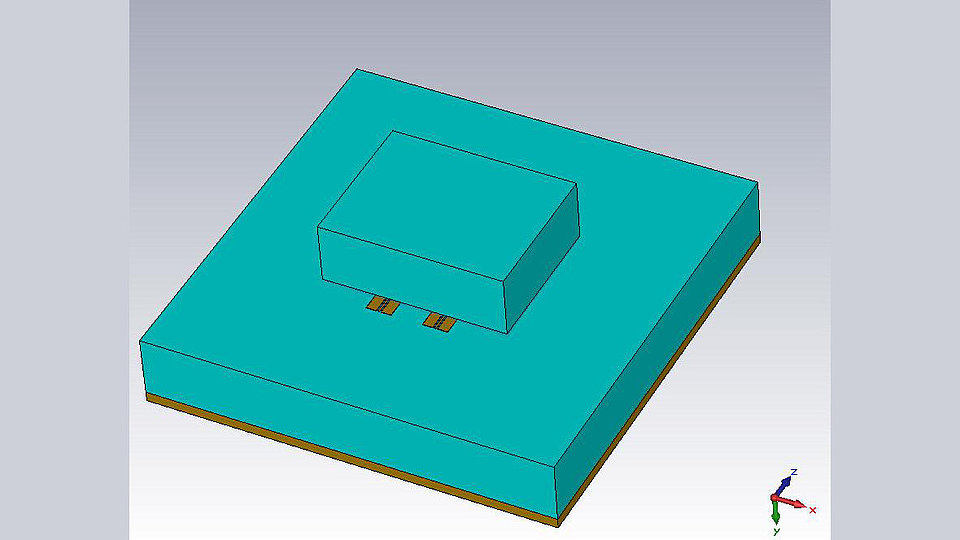EM Field-Simulations
The application of electromagnetic field simulations for the design of microwave circuits has become a must in the last years. The mutual interactions of electromagnetic fields and waves within a circuit and their neighborhood increase with growing frequencies. Maxwell's equations describe this behavior. However, as the equations are rather difficult to solve even for small problems, special numerical procedures are used to obtain results for practical tasks – no matter whether it is about simple line structures on chips, transitions between different circuit parts or mountings, or the influence of a housing on the electric behavior.
Presently, it becomes more and more important to describe, understand, and define measurement probes (often a coaxial structure with 3 attached measurement needles). In order to find a standard which allows for reliable measurements of high-frequency circuits, it is important to understand the electromagnetic field behavior of the probe system. This includes desired effects as well as unavoidable parasitic effects.
Accessibility information: the content of the video sequences is provided as accessible text alternative (pdf, accessible).
One of the most important numerical solvers uses the so-called “Finite Difference” approach which discretizes a spatial region into small subcells in which the fields are assigned to certain nodes and are, in turn, connected with all neighboring cells to form a linear system of equations. This method of “Finite Differences” is used at the FBH for investigations and design purposes. Due to the increasing amount of data in most cases, the time domain solution is applied using the software Microwave Studio from CST. The spectrum of requirements covers a wide range from simple microstrip lines in low GHz regions up to complex geometries in the THz region. Beyond these internal investigations, the FBH offers its competence also to industrial partners for solving detailed problems.
Range of topics covered - overview
- modeling of passive elements in integrated circuits (GaN, InP,….)
- packaging and multi-chip modules (flip-chip, thin-film, LTCC, cases)
- sub-millimeter wave lines
- analysis of parasitic effects und uncertainties in high frequency measurements and calibration approaches
Our institute offers extensive experience in all of these fields due to manifold projects and industrial contracts.
